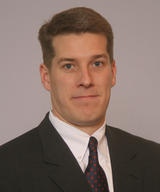Editor: First, would each of you describe the areas of Intellectual Property Law in which you practice?
Altersohn: My practice covers all aspects of intellectual property litigation and counseling, with a particular emphasis on patent litigation. My matters most frequently involve technologies in the areas of electronics, software, networks and telecommunications.
Neufeld: My practice primarily has two facets, the first being patent prosecution. We work with clients to prepare and prosecute patent applications with the goal of developing sophisticated portfolios of U.S. and foreign patents. The second area of my practice involves advising clients with respect to IP transactional matters, which typically include licensing or acquisition of IP assets and providing counseling with respect to those assets.
Editor: Would you discuss the impact of the America Invents Act and any other modifications since the new law became effective? Have you noted any differences in the time required to get a patent approved?
Neufeld: While it will take some time for the full effects of the AIA to shake out, there are at least two areas in particular that come to mind. First, the move to a first-to-file patent application system, in line with most foreign countries, was a big switch for the U.S. This change provides increased pressure to file patent applications with the Patent Office as early as possible. As a result, clients are accelerating their internal processes relating to decisions about when to pursue patent applications. Some clients are also flagging particular product or technology areas of high value where they wish to accelerate the process of filing patent applications. Another strategy some clients are adopting is an expanded use of provisional patent applications, which can often be prepared and filed with the Patent Office more quickly than a typical non-provisional patent application.
Another major change under the AIA is the availability of post-grant proceedings at the Patent Office - in particular, the inter partes review proceedings that have essentially replaced inter partes reexamination. While there was some uncertainty initially among practitioners as to the usefulness and effectiveness of inter partes review proceedings, now that we have had about a year to see some of the proceedings play out, this has become a very popular option for entities that want to challenge the validity of a patent. In the first year after enactment of the AIA, there were roughly 500 IPR proceedings filed at the Patent Office, and the rate of filings appears to be growing. The IPR proceedings offer several attractive features that are going to continue to make them a popular choice for challenging patents. For one, it is a more streamlined and cost-effective process than a district court litigation because there is limited discovery, and the proceeding is quite a bit faster.
Other advantages for the party challenging the patent include a lower burden of proof to establish invalidity and a broader interpretation of claim terms than when compared to litigation in district court. In its first year of existence, the IPR option has gained a great deal of attention among patent practitioners.
Editor: Has the Patent Office staffed up enough to take care of these inter partes procedures?
Neufeld: Yes. There has been substantial hiring of new administrative law judges at the Patent Office to handle these proceedings in the expedited time frame in which they must be completed. The substantial filing fees associated with the IPR proceedings help defray the costs of hiring of the new ALJs. Although the filing fees are not insignificant, many clients consider the costs of challenging a patent through an IPR money well spent when compared to the time and expense involved in a district court litigation.
Editor: Allison, the AIA was intended to reduce the number of lawsuits by requiring that non-practicing entities (NPES, or patent trolls) file individual patent infringement suits against individual companies rather than lumping all claims against companies accused of infringing their patents into one lawsuit. Instead, there has resulted a proliferation of individual suits. President Obama has issued an executive order requiring the Patent and Trademark Office to demand that companies be more specific about what a patent covers and how it is being infringed. What is your view of these proposals?
Altersohn: I believe the executive order you’re referring to only addresses part of the problem. It presupposes that the patents being asserted by the patent trolls are generally too broad, and a way to ameliorate this situation is for patentees to be more specific about what their patent covers and how it would be infringed. But the problem is not just with the general breadth of the patents. While the intent of some of the language of these proposals is to reduce the number of patent troll cases, its impact goes beyond those entities and will also adversely affect some innovative companies and individuals that are developing great inventions.
Turning back to your question on the impact of the AIA, from a litigation perspective, the new joinder provision restricts the circumstances of when a plaintiff can sue multiple defendants in the same suit. Now, in order to join defendants in a common suit, the claims must arise out of the same transaction or occurrence and relate to the same accused products or processes, and there must also be a question of fact common to all defendants. The intent of this provision was to reduce the number of cases; however, reports show that overall the number of case filings has increased since plaintiffs are filing individual suits against each defendant. As a result, while the number of individual filings may have increased, I would venture to guess that the number of defendants collectively has decreased because, for instance, some anchor defendants that were routinely named in suits just to maintain jurisdiction are no longer being sued. Another aspect of the change is the ability for a defendant to more easily move to transfer its dispute to a different jurisdiction. Consequently, if a transfer is granted, there may be multiple courts handling cases involving the same patent and handing down potentially inconsistent decisions on claim construction and other issues.
Editor: I’ve read that the number of NPE suits is more than 50 percent of all lawsuits for infringement.
Altersohn: I don’t have any exact data, but I’m not surprised. Prior to the AIA, the number of defendants in just one lawsuit brought by an NPE could be more than 100. So now when the plaintiff in that circumstance has to file 100-plus individual lawsuits, an increased percentage is a natural consequence.
I do think that some of the recent patent reform legislation, such as the Innovation Act passed by the House, is probably more targeted at deterring the NPEs from bringing these suits. For instance, some of the key provisions include tightened pleading requirements, such as the need for the plaintiff to identify each allegedly infringed claim, all of the accused products, and their infringing features. The legislation also contemplates fee shifting, whereby the prevailing parties would be entitled to have their reasonable fees and expenses paid by the loser, as well as delaying more costly discovery until after the claim construction hearing.
Editor: What IP cases decided by the federal courts are noteworthy in the recent terms?
Neufeld: Two cases that come to mind are Alice Corporation v. CLS Bank and Akamai v. Limelight. The Federal Circuit’s 2013 decision in CLS Bank did not provide the guidance many were seeking with respect to the patentability of computer and software implemented inventions. The Supreme Court has now agreed to review the appellate decision. The Patent Office has been criticized over the past decade for granting overly broad patents involving computer and software implemented technologies. However, the Patent Office has taken positive measures over the last few years to improve the quality of those types of patents. Many patent practitioners are hopeful that the Supreme Court’s decision in CLS Bank will help to clarify whether these types of inventions should be patentable at all, and if so, under what circumstances.
The second case, Akamai v. Limelight, a Federal Circuit decision in 2012, changed the law with regard to divided infringement and greatly expanded the liability that companies may face for inducing patent infringement. The Supreme Court recently decided to review the Federal Circuit decision. The Supreme Court’s decision is expected to have far-reaching effects on liability for inducing patent infringement, particularly with respect to technologies involving the Web and information technology where there are often multiple parties involved in a patented system or method.
Altersohn: The Federal Circuit recently has looked again at the doctrine of patent exhaustion and issued two decisions impacting that doctrine, at least as it relates to method claims: Keurig Inc. v. Strum Foods, Inc. and Lifescan et al. v. Shasta et al. In the first case, Keurig had patented both its brewing coffee system as well as the method of using the K-cups that are inserted into these machines. Keurig asserted only the method claims directed to using the brewing system and tried to prevent Strum Foods from selling competing coffee cartridges that may be used in its product. The Federal Circuit found that since Keurig’s brewing system was patented, the substantial embodiment test of Quanta did not apply, and the initial authorized sale of the device, without condition, exhausted all patent rights in the brewer, including claims that cover the brewer itself as well as claims that cover the method of using it.
The second case is Lifescan v. Shasta, which involved glucose meters and test strips. Similar to Keurig, Lifescan only asserted method claims directed to the use of the meter and test strips. However, in this case, since the glucose meters themselves were not patented, the substantial embodiment test of Quanta applied, and the method claims would be exhausted only if there were no reasonable non-infringing use for the meters. One of the questions raised by the court’s analysis is, what constitutes a reasonable non-infringing use? The Federal Circuit concluded that such use must be both reasonable and intended by the patentee and actually available to the user.
In addition, two cases come to mind involving fee-shifting for which the Supreme Court recently granted cert: Highmark Inv. v. Allcare Health and Icon Health and Fitness, Inc. v. Octane Fitness. Both of these cases involve the standard for an exceptional case under which the court would have the discretion to award attorneys’ fees. There are two important issues to be addressed here: (1) the deference that is due to the district court in its finding that there is an exceptional case, and (2) the standards that are being applied to the findings. In fact, the Federal Circuit recently issued a ruling in Kilopass Technology, Inc. v. Sidense Corporation, loosening the standards to be used by the district court in determining an exceptional case. The two-prong test includes (1) whether the litigation was brought in bad faith, and (2) whether the litigation is objectively baseless. Previously, in order to establish bad faith, there was the presumption of requiring “smoking gun” evidence. Now, the Federal Circuit is saying that the judge can infer bad faith if she finds the suit was baseless.
In sum, we see the topics of fee-shifting and costs being discussed in both legislation and the courts, and it will be interesting to see how they decide these issues.
Published January 24, 2014.




